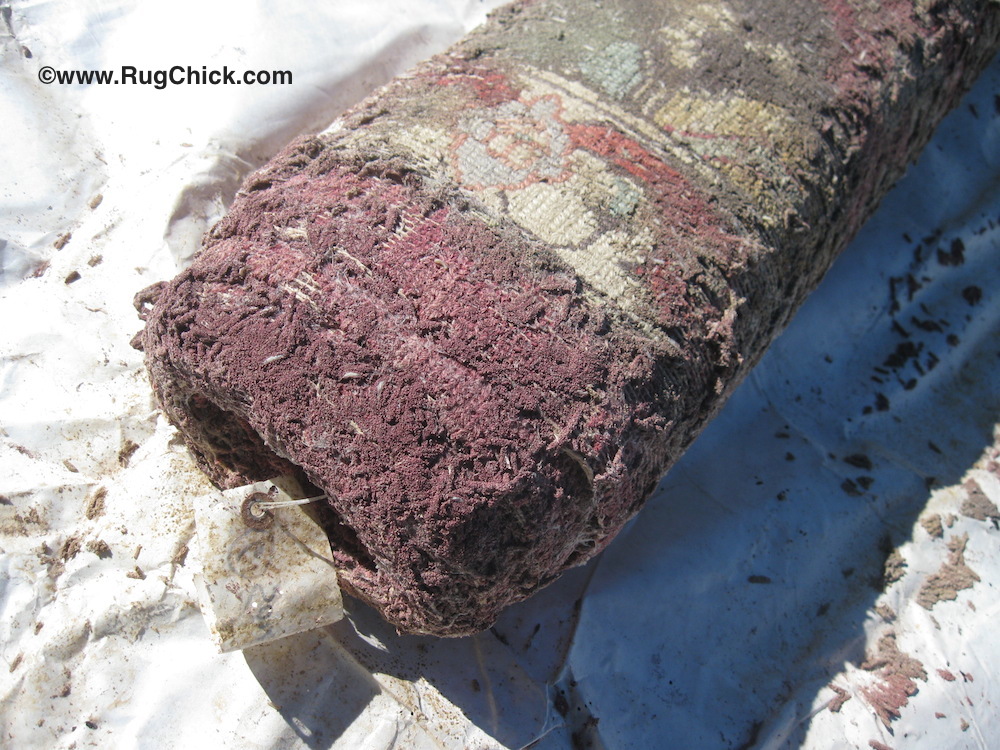Moths, Bugs, and Rugs (What you need to know)
Wool rugs are woven to last HUNDREDS of years. In our industry a rug today is not considered to be “antique” unless it is woven before 1900. They are made to last, and many of them do when properly cared for.
However, you put a rug in the wrong conditions, with the wrong bugs, and you can lose that rug in under a year. Eaten away by moths, carpet beetles, or other bugs feeding on other contaminants the rug fibers are holding on to.
This 8’x10′ Turkish rug was completely eaten away while in storage several years. Rugs must be CLEANED and with protective treatments before placing into storage. Worms and waste cover this once beautiful rug.
Storage is the place where the worst damage occurs. This makes sense because the bugs like dark, undisturbed places to make their meal.
In homes, with rugs in use, this bug damage will be found under large furniture. Moths and carpet beetles love to eat under a sofa that is never moved to vacuum under it. And damage will be found UNDERNEATH the rug on the back side.
Here is a video that shows you what the damage looks like, and where to look:
The damage from the top side can be relatively easy to spot.
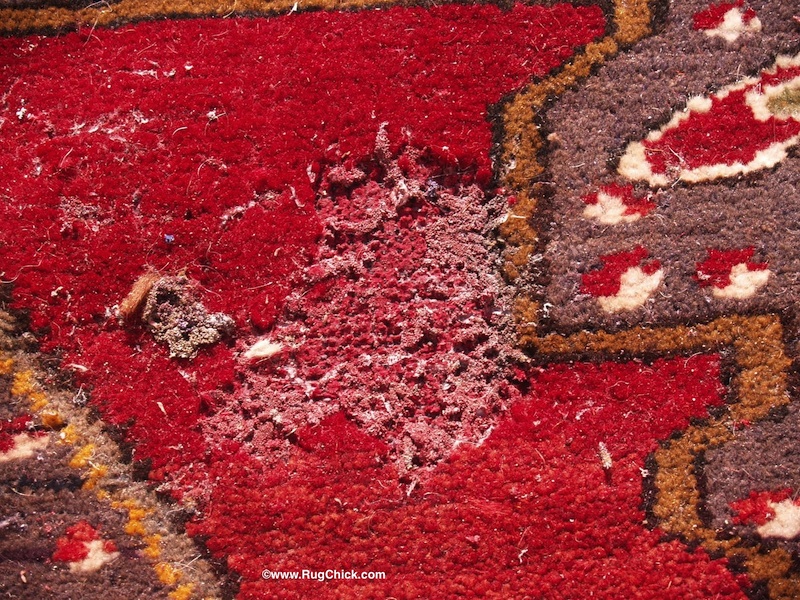
Emerging moth larvae is eating away the wool fibers. Damage like this occurs underneath furniture in dark, undisturbed places
Damage where the worms are not visible, and the bugs have left (due to cleaning or treatment), leave behind bald areas where the wool has been eaten away completely, and only the cotton foundation fibers remain.
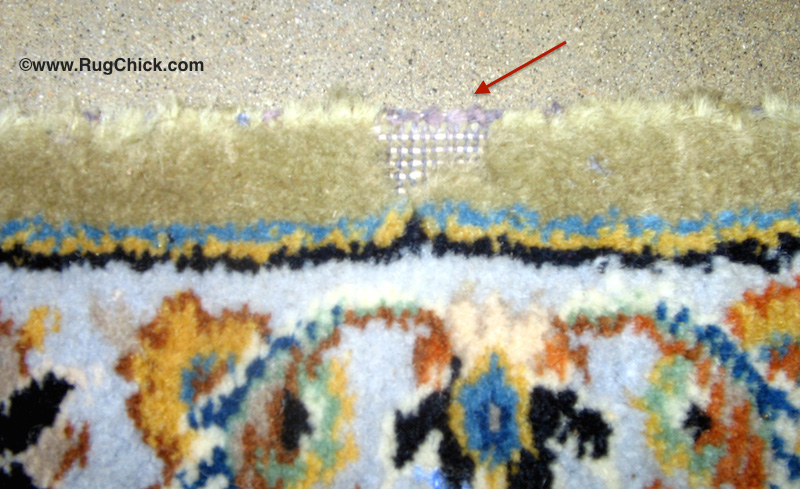
Caption
On the back side, you can see damage again as white bare areas with the foundation peeking through:
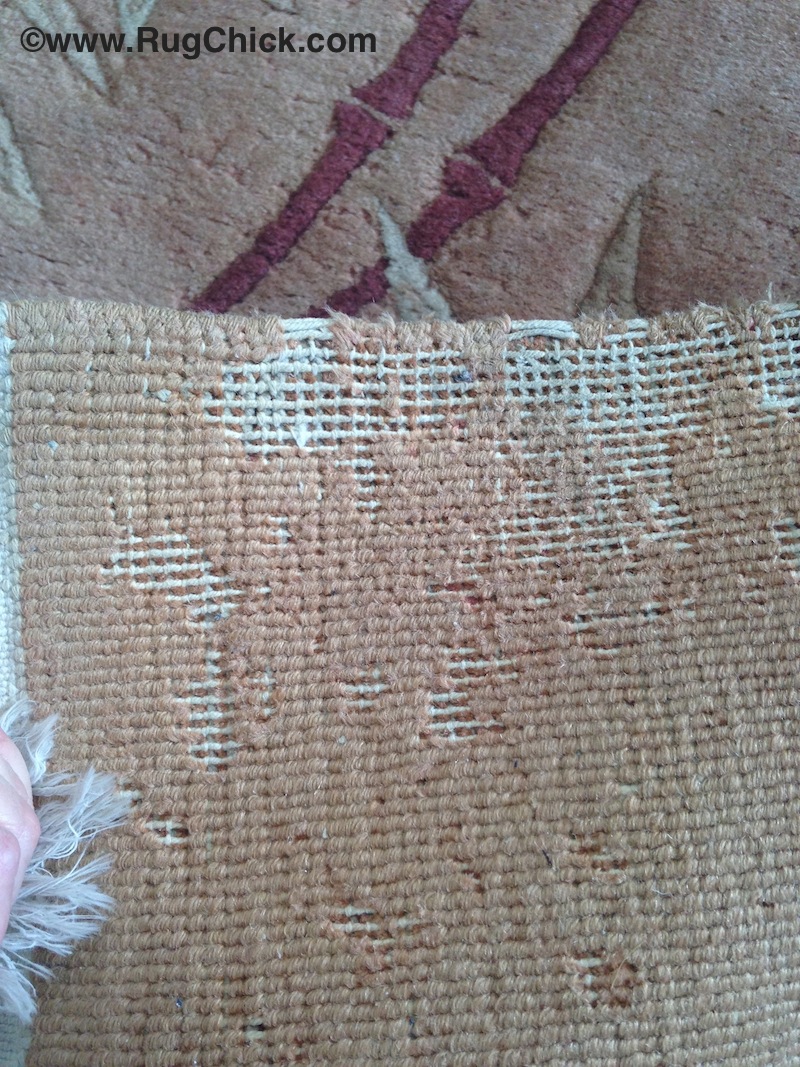
Bugs eat away the wool and leave the bright white cotton behind. On the front pile side you can see some divots in the wool, but the back shows a clear cotton grid.
Before there gets to be those white bare areas, you will see moth casings in the stage before the larvae hatches and begins to eat and eat and eat. These casings look like “sticky link” and webbing, and sometimes small cocoons, based on the type of bug.
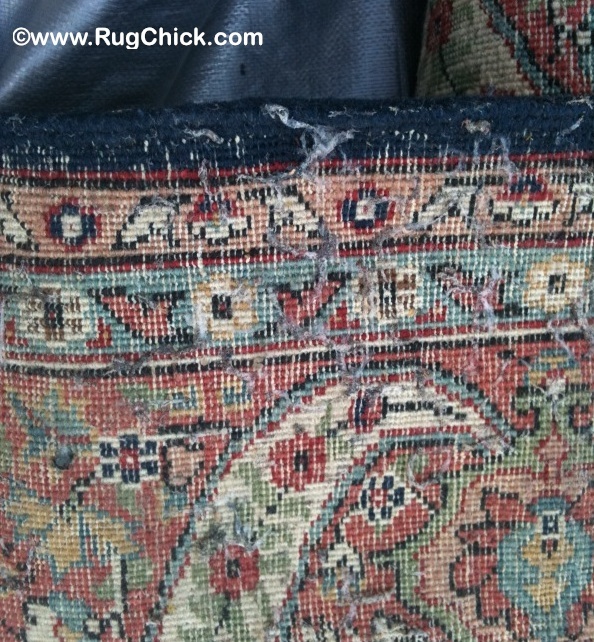
The beginning of an infestation looks like sticky lint and webbing. This rug can be saved if it is treated by a pest specialist and then washed by a rug specialist.
Other bugs not known for eating wool (silverfish, termites, and other creepy crawlies) can eat wool if there is something spilled on the fibers that they find appetizing. The wool is just the “holder” of the meal for them, and gets eaten away in the process. This is why it is always very important to clean up spills quickly, so that the residue does not soak into the cotton interior fibers.
Insects find dirty rugs much more appetizing than clean rugs.
This is one of the reasons why the industry recommends that rugs are cleaned every 1 to 3 years, depending on the quality of the fibers, the quality (and frequency) of your vacuuming, and how much use a rug gets (feet and paws).
This video shares what to do in order to help keep the bugs away from your rugs:
At our rug shop we send reminders to our clients to wash their rugs at least every two years if it is noted as an “active” area rug. If the owners have pets that have had several accidents, then we remind them sooner, because for some unknown reason, moths in particular LOVE urine soaked wool fibers. They will eat at those areas first.
Quick clean up of pet accidents helps lessen that risk. Having a fiber protector applied on the wool fibers also can help you to clean up more effectively because it helps to “suspend” the urine longer for the clean up. It does not bulletproof the rug, but it does help lessen the damage and make the clean up more successful.
(By the way, Pet urine causes severe fiber and dye damage to your rug over time. If quick clean up has not happened, then you need to plan for a wash in the near future. A combination of pet urine and moth activity will be a rug disaster if that happens. Those bugs usually eat the rug from the back side, so that is where to inspect.)
UC Davis published a study on the preventative care of rugs and wall-to-wall carpeting in order to keep the bugs away from your home.
Here is their page on carpet beetle management: UC DAVIS – Carpet Beetles
Here is their page on clothes moth management: UC DAVIS – Cloth Moths
Both discuss the importance of regular cleaning and vacuuming as the best way to prevent an infestation.
If you are not sure whether your rugs are dirty, or whether you are vacuuming “properly”, here is my post on exactly that topic: How to vacuum wool rugs.
It is important, especially with your investment wool and silk rugs, to have a routine for their care to keep them in great condition for this generation, and the next, and perhaps the next.
And if you have any rugs in storage. If you did NOT store them very soon after washing, then plan to get them out of storage to have them cared for right away. The most common damage that we see rugs disposed of over is improper storage. And it is always heartbreaking when it happens, because most people put their rugs into storage in order to protect them, and yet, it usually is the reason why they end up losing them.
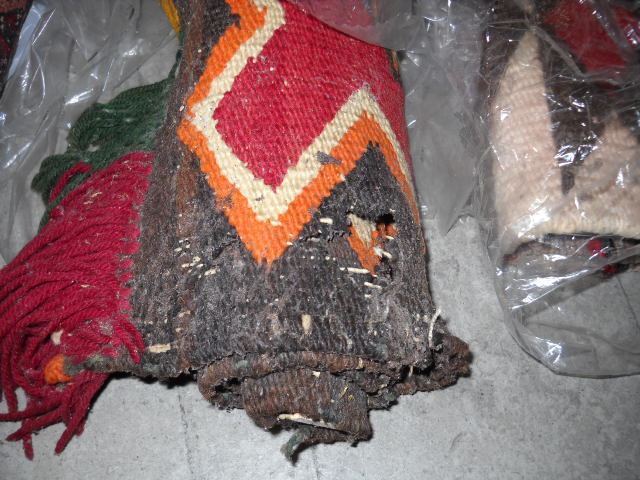
Moths in a storage unit made a meal of every rug belonging to this client, numerous Navajo and South American rugs were destroyed. Tribal rugs are more at risk for moth damage. They were also wrapped in plastic, which led to mildew. Wool rugs should NEVER be wrapped in plastic.
If after watching the videos, you inspect your rugs and discover bug activity, then the first call is to your pest control specialist to treat the rug for you (and kill the bugs). The second call is to your rug specialist in order to wash the rug, and to have them give advice on other treatment the rug may need to protect it in the future.
The best protection though against bugs causing harm to rugs is a regular vacuuming and washing routine. And the more often you vacuum, the longer you can stretch in between needed washings.
If you have any questions, or need to find a rug cleaner in your area, shoot me a message CONTACT LISA
All my best to you and your rugs!
-Lisa

